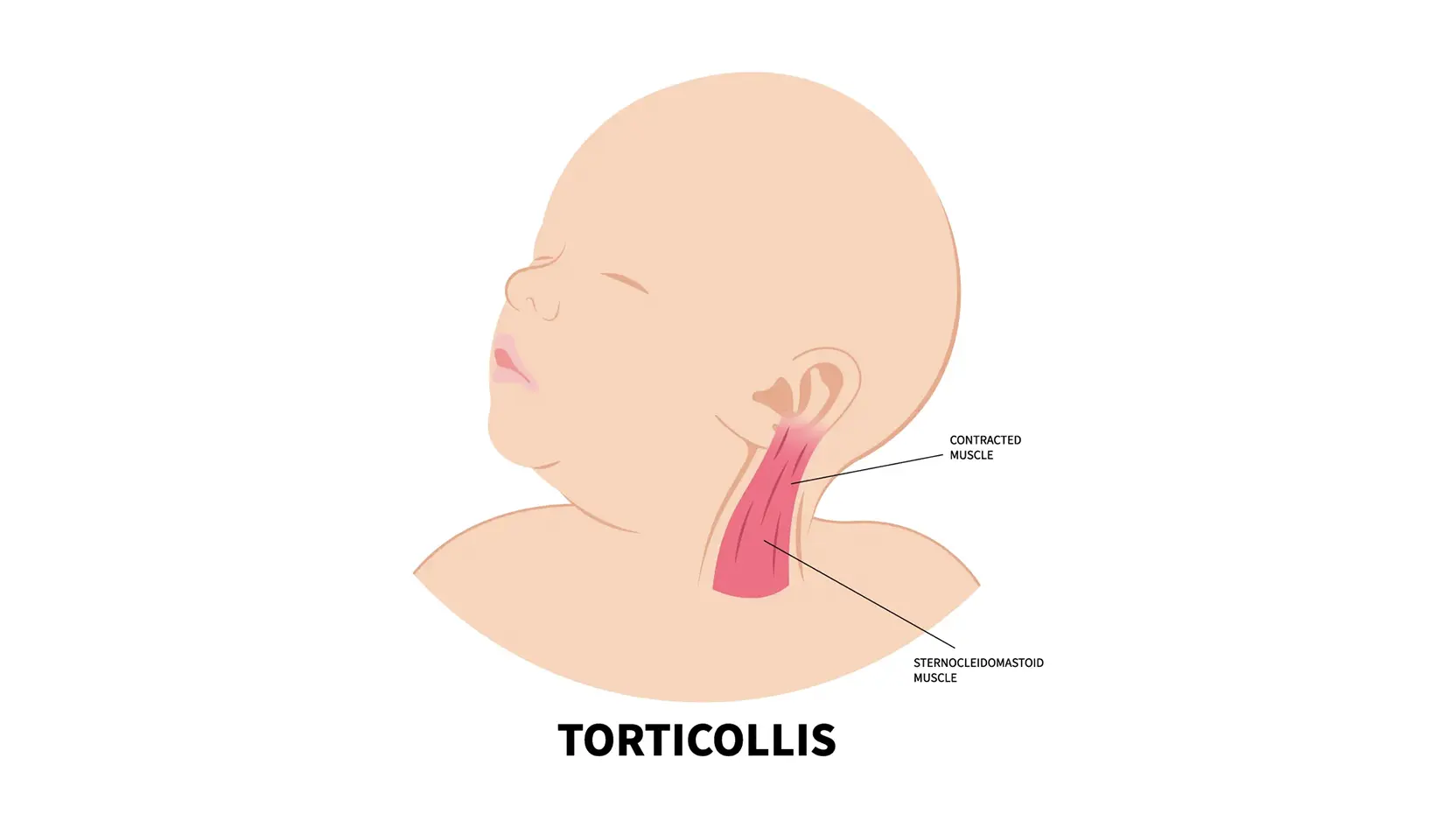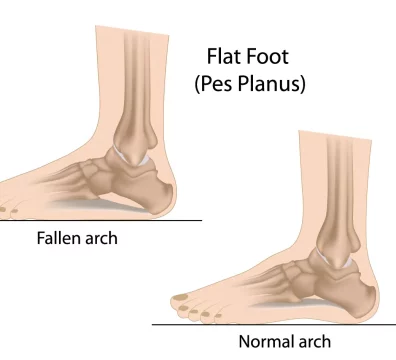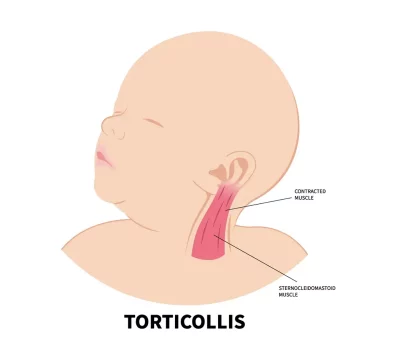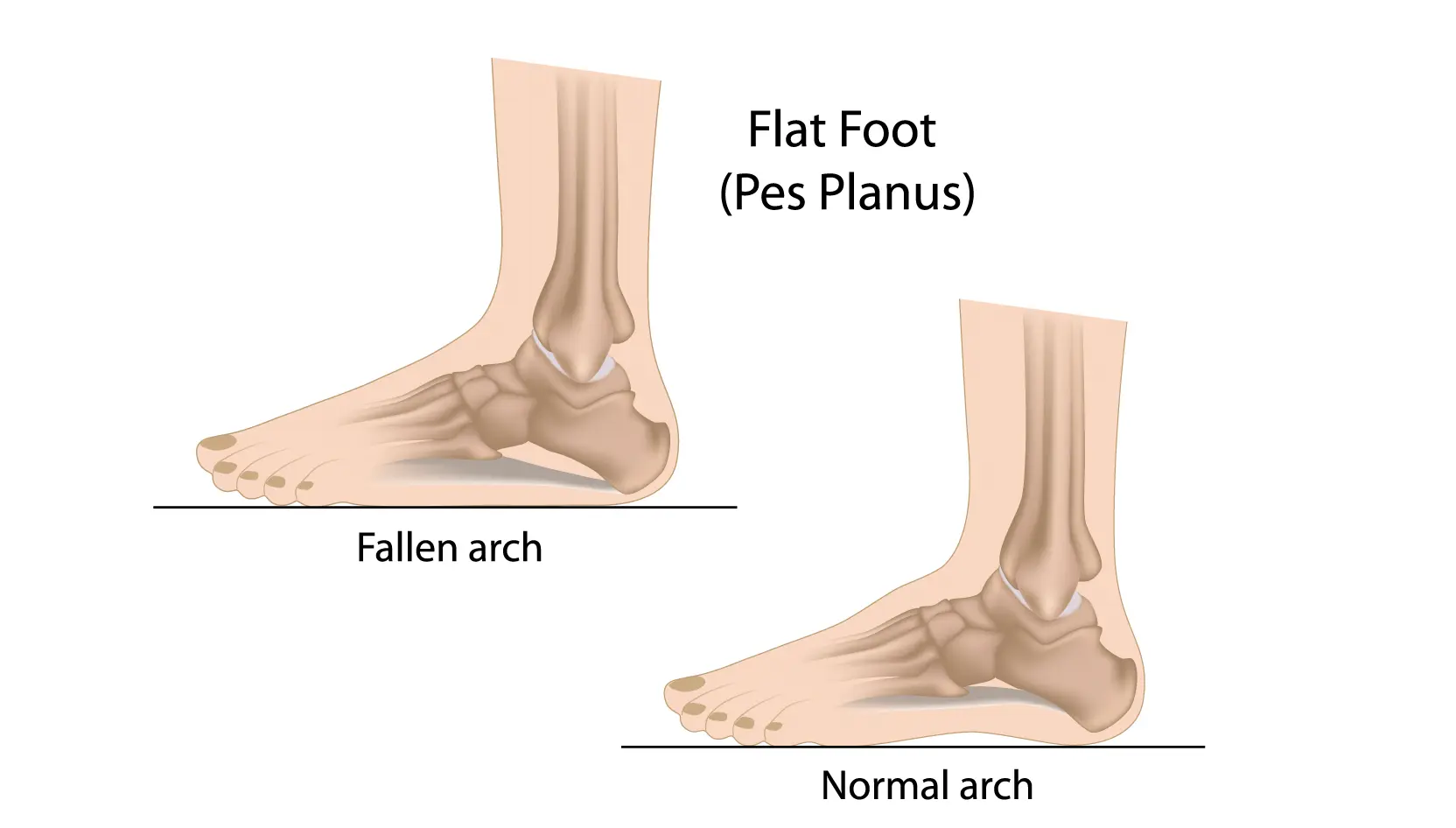What is torticollis?
Torticollis, or wry neck, is a condition where a child’s neck is tilted to one side due to neck muscle tightness or spasm. Physiotherapy can help treat this condition.
What are the types of torticollis?
- Congenital torticollis (Most common)
- Acquired torticollis
- Spasmodic torticollis
What is congenital muscular torticollis?
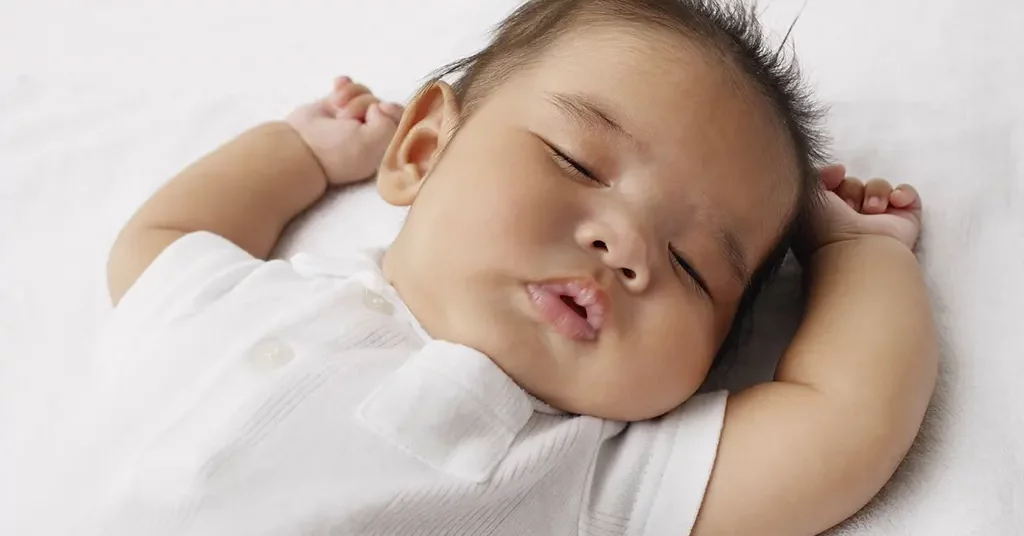
If the baby is born with the neck tilted to one side, it is known as congenital torticollis. Congenital muscular torticollis (CMT) is the most common torticollis that is present at birth. This is due to the tightening of the Sternocleidomastoid (SCM) muscle on the right or left side of the neck. The cause of CMT is unknown, but possibly due to the baby’s position in the womb. A child may also have a soft lump in the belly of the SCM.
How can congenital muscular torticollis be treated?
Studies show that CMT can be resolved through physical therapy, such as active correction and strengthening exercises. A child should recover from CMT within a year if the prescribed exercises are carried out daily.
Plagiocephaly
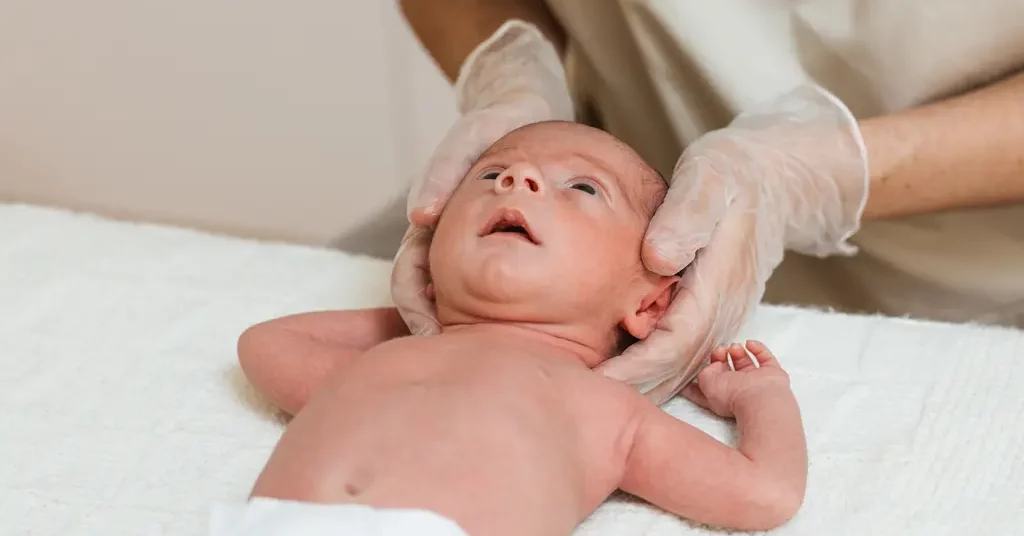
For congenital torticollis, there is an associated condition known as Plagiocephaly, which is commonly seen.
Plagiocephaly, also known as flat head syndrome, is a condition characterised by the flattening of one side of or back of the head. This is due to the preferential positioning of the head, causing distortion to the skull plates of an infant.
How can plagiocephaly be treated?
Early treatment can help prevent the worsening of a flattened head shape. Physiotherapy can help with repositioning therapy, and in more severe situation, the child may require a referral to the orthotist for helmet treatment.
What is acquired torticollis?
Acquired torticollis is non-congenital and may result from muscle spasms, trauma, scarring or disease of the cervical spine. They may be presented with a head tilt and may come with or without pain, headache and reduced neck movements.
How can acquired torticollis be treated?
The treatment options will differ based on the cause and symptoms of the acquired torticollis. Generally, physical therapy can help reduce the pain, improve the movement and muscle flexibility.
Usually, an X-ray or MRI investigation may be necessary in some cases to find out the main cause of the acquired torticollis before commencing physical therapy.
What happens during physiotherapy?
The physiotherapist will assess the child’s neck condition and prescribe the appropriate positions, exercises or a combination of these. The physiotherapist will teach the parent exercises for the affected neck muscles, which must be carried out several times a day.
Follow-up review sessions of the child will be needed, and the frequency of it depends on the severity of the children’s condition.
What is spasmodic torticollis?
Spasmodic torticollis, also known as cervical dystonia, is involuntary movements of the head and neck to bend and/or turn to one side. These movements can be painful and may impede on the child’s development or participation in daily activities.
How can spasmodic torticollis be treated?
The treatment options vary depending on the severity of the dystonia. Aside from medications, physiotherapy will help improve the child’s neck flexibility, strength and motor development.

